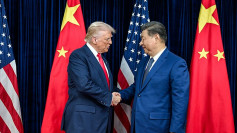A series of urban railway projects and improvements have passed through China's state planner, with a planned 78.7 billion yuan ($11.45 billion) allotted for the railways. The projects kick start with a planned railway in the city of Changchun, on the northern Jilin province.
It was the first railway project in over a year and signifies the jumpstart of the Chinese infrastructure push; it was earlier postponed, following a deficit in local government funds, Reuters reports.
The Chinese Politburo gave the green signal after a series of studies that showed construction projects were needed to promote economic growth-growth that was badly needed in the midst of an ugly trade dispute between the US and China.
The urban railway projects consist of the Changchun railway, around 135.4 km of it, and eight others. An announcement was posted on the Jilin Development and Reform Commission's website with more details on the project, but one thing was for sure this more than doubles the number of railway lines coming in and out of Changchun, which was initially two light railways as well as an underground metro line.
Caixing Global says the details on why there are very few urban railway projects ongoing right now is because of government requirements. Cities that requested or needed new sub/railway projects needed to complete a series of requirements that included good standing in fiscal revenue and gross domestic product.
When news of the Changchun project broke out, several cities where projects were pending re-submitted their requests. These also had revised construction plans, most of which contained the needed requirements for approval of the projects.
Several of these cities included Chengdu, capital of southwest Sichuan, which requested nine new urban lines, and Wuhan, capital of central Hubei, that removed a few rail lines from its request, which it had re-submitted.
China's economic growth is sure to move into the green once the projects start rolling. There are pending subways remaining to be finished in Baotou city, Inner Mongolia, which could be restarted. The projects will be funded through bank lending and completion is scheduled to conclude in 2023, with most of the projects scheduled to start later this year.





